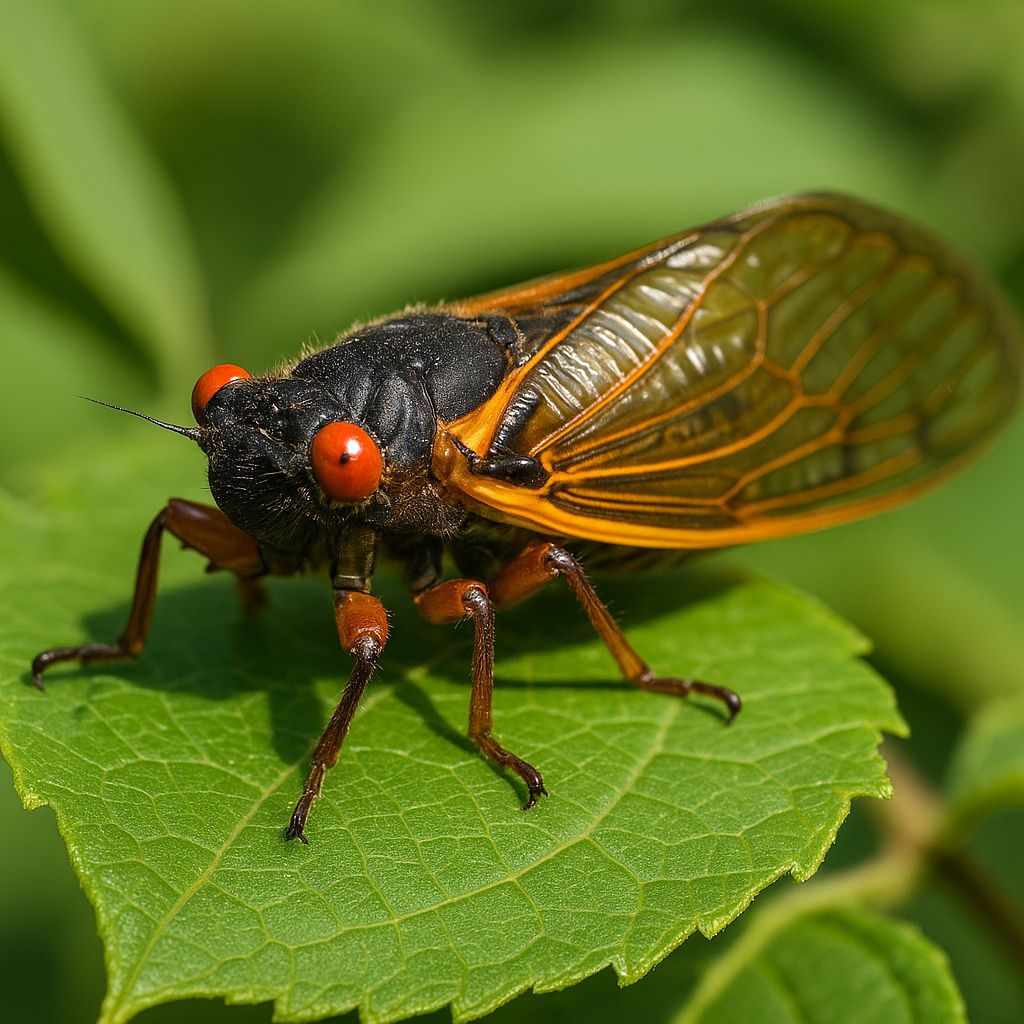≡-Second-Largest Cicada Swarm in U.S. History Set to Emerge Along the East Coast as Brood XIV Surfaces from Georgia to New York – Viral of Today
<> Viral of Today <>
Home
»
TOURISM NEWS
»
Second-Largest Cicada Swarm in U.S. History Set to Emerge Along the East Coast as Brood XIV Surfaces from Georgia to New York
Monday, June 2, 2025
This summer, an extraordinary natural event will unfold across the Eastern United States. Millions of periodical cicadas, belonging to the 17-year Brood XIV group, are beginning to emerge from the soil, marking one of the largest insect emergences the nation has seen in nearly two decades. Spanning from Georgia in the south to New York in the north, this cicada phenomenon is expected to draw both scientific interest and public curiosity.
Recognized as the second-largest cicada brood in the country—surpassed only by Brood XIX, which appeared across the South in 2024—Brood XIV’s reappearance serves as a dramatic display of one of nature’s most unique reproductive strategies.
What Are Periodical Cicadas?
Cicadas in the United States are categorized into two types: annual cicadas, which appear every summer, and periodical cicadas, which emerge only once every 13 or 17 years depending on the species. According to the U.S. Environmental Protection Agency (EPA), periodical cicadas are grouped into broods, named and numbered based on when and where they emerge.
Each brood follows its own distinct cycle and appears in different parts of the country. Brood XIV is one such 17-year brood and has been closely monitored by entomologists due to its wide range and dense population. Federal and university-based researchers consider it a “keystone” brood for ecological tracking and scientific study.
Where Will Brood XIV Emerge?
Brood XIV’s emergence covers a large geographic area, stretching from southern states like Georgia and the Carolinas to mid-Atlantic and northeastern regions including Virginia, West Virginia, Pennsylvania, New Jersey, and all the way to New York and parts of Connecticut.
The timing of their arrival depends on soil temperatures. Cicadas begin to surface once the soil reaches approximately 64 degrees Fahrenheit at a depth of about eight inches. Since this temperature milestone is reached earlier in the south, states like North Carolina are already reporting sightings, while more northern areas are expected to experience their peak emergence later as summer temperatures rise.
The entire adult phase of their lifecycle lasts around four to six weeks. During this brief window, cicadas complete their reproductive process before dying off, leaving behind the next generation hidden underground once again.
A Deeply Rooted Lifecycle
The life of a periodical cicada begins underground, where the insect spends 17 years in its immature nymph stage. Buried beneath trees and shrubs, the nymphs survive by feeding on sap drawn from plant roots. Over the years, they grow slowly, undetected by most.
Then, almost all at once and in remarkable synchrony, millions of mature nymphs rise from the earth. They crawl up tree trunks, shed their exoskeletons, and become winged adults. Males soon begin to sing—emitting their famously loud buzzing calls that fill forests and neighborhoods.
After mating, females use their ovipositors to cut slits into small tree branches, where they lay hundreds of eggs. After about six weeks, these eggs hatch, and the tiny new nymphs fall to the ground, burrow into the soil, and begin the cycle again.
Harmless, Fascinating, and Environmentally Beneficial
Despite their overwhelming numbers and noisy presence, cicadas pose no threat to people, pets, or agriculture. According to the EPA, cicadas do not sting or bite, nor do they damage flowers, fruits, vegetables, or other typical garden plants. Their only significant impact is on young or fragile trees, where egg-laying activity may cause minor damage. For the average homeowner, however, no protective measures like insecticides or plant coverings are necessary.
In fact, cicadas serve valuable roles in the ecosystem. Their emergence aerates and enriches the soil, provides a temporary but abundant food source for birds and small mammals, and contributes organic matter as their bodies decompose.
Their presence is a short-lived but important ecological contribution—and one that is unique to North America.
A Natural Wonder Exclusive to the U.S.
The synchronized emergence of periodical cicadas is a phenomenon found only in the United States. Nowhere else in the world do insect populations behave in quite this way, with millions surfacing all at once after more than a decade underground.
This rare biological event has long fascinated scientists and naturalists, many of whom use these cyclical appearances to educate the public on insect life cycles, ecology, and biodiversity. Schools, parks, and community groups often take advantage of a brood year to host nature programs, workshops, and field walks to encourage environmental awareness and appreciation.
Brood XIV is particularly noteworthy because of its size and reach. It follows in the footsteps of Brood XIX, which captivated the South in 2024, and Brood X, the so-called “Great Eastern Brood,” which last emerged in 2021. Some entomologists even refer to Brood XIV informally as the “Greater Eastern Brood,” due to its slightly larger range and population than Brood X.
Observing Brood XIV in Action
For those living in or visiting affected areas, the coming weeks offer a rare chance to witness this natural marvel. Federal and state environmental agencies provide field guides and educational resources to help people identify different cicada species, recognize their songs, and understand their behaviors.
Observers are encouraged to watch the emergence process from a respectful distance. The transformation from nymph to adult, the exoskeleton-shedding, and the mating displays are all easily visible in parks, backyards, and wooded areas.
People are reminded that these insects, though noisy, are part of a cycle that has been repeating for centuries—and their appearance is a sign of a healthy, functioning ecosystem.
Nature’s Summer Symphony
Cicadas are best known for their sound. The males’ mating calls can reach over 90 decibels, creating a pulsating, droning chorus that defines summer in many parts of the country. While some find the noise overwhelming, others appreciate it as the soundtrack of a unique season in American nature.
Because cicadas are so abundant during their emergence, their presence cannot be ignored—but instead of viewing them as a nuisance, experts encourage communities to embrace the moment. The noise, the sight of the insects, and the fleeting nature of their lifecycle all contribute to a deeper understanding of nature’s rhythms.
Conclusion: Embracing a Unique and Temporary Guest
As Brood XIV makes its grand entrance this summer, it serves as a reminder of how much life takes place just beneath the surface—hidden from view, waiting for the right moment to emerge. These cicadas, with their 17-year rhythm and startling synchronicity, remind us that even the most ordinary environments can suddenly burst with extraordinary life.
Their presence offers both a spectacle and a lesson in patience, resilience, and renewal. While they may startle some and awe others, these ancient insects deserve our curiosity and appreciation.
In a few short weeks, they will vanish again, leaving behind only silent soil and the faint hum of memory—until the next time they rise.
This information will surprise you!
See also
- Read until the end to discover everything.
- Important information you need to know.
- Interesting facts and helpful tips.
Conclusion
Did you enjoy the news? Keep following us daily!













